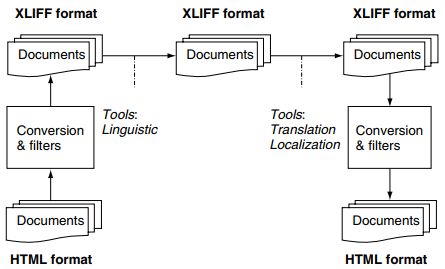- 签证留学 |
- 笔译 |
- 口译
- 求职 |
- 日/韩语 |
- 德语
Not infrequently, many technical and logistic challenges arise during localization, and one such challenge relates to the problems of transferring texts between different translation and localization tools. Texts are often stored in different file formats, some of which are proprietary, for example reports belonging to a company, while others are commonly shared such as HTML files. These files are not necessarily easily transferable from one tool to another. In order to eliminate such challenges, a standard called XLIFF (XML Localisation Interchange File Format) has been developed by OASIS (Organization for the Advancement of Structured Information Standards). OASIS is the largest independent, not-for-profit consortium in the world that is dedicated to overseeing the standardization of XML applications and web services. It has about 150 companies and individuals in the localization industry as members including Alchemy Software, Hewlett-Packard, IBM, Oracle, Microsoft, Novell, Sun Microsystems and Tektonik.
XLIFF is another XML-based format that allows the interchange of localization information and is tool-neutral, enabling what is claimed to be a seamless transfer of information between tools. One of its uses is to store texts that have been extracted from their original formats and to move these texts from one stage to another in a localization process without losing any information, as shown in Figure 4.19. The extracted data can be in the form of text or graphics. The advantage of using XLIFF is that it separates a text from its formatting for translation purposes, enables the use of multiple tools and stores information during a localization process.

Figure 1 Example of XLIFF in the localization process
Source: Jewtushenko and Reynolds (2002).
Using filters, the text and layout in documents in HTML format are separated. The section with translatable text is converted into an XLIFF format while the non-translatable data (the layout) is kept in a separate file. An XLIFF file consists of one or more file elements and each of these has a head and a body section similar to TMX and TBX standards. A head section contains information about the text such as project number, contact information and so on, as shown in Figure 2.
